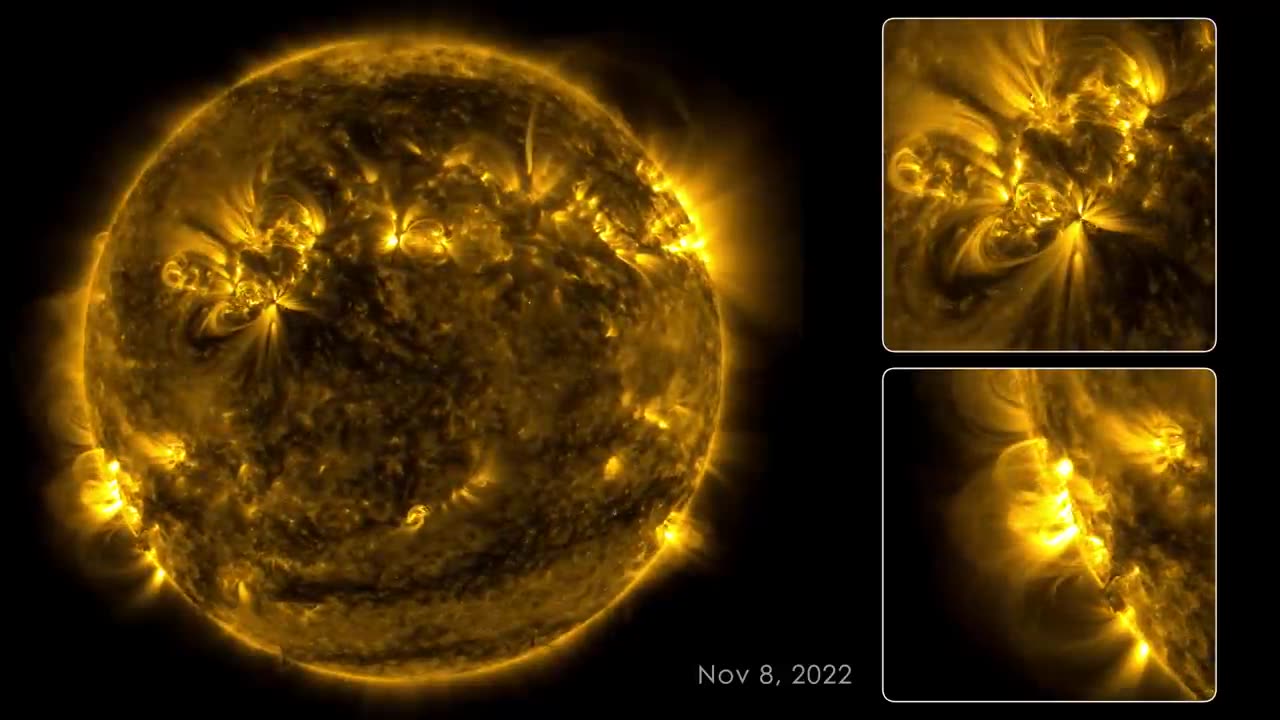Premium Only Content

133 Days On The Sun
The Sun is a massive, luminous ball of hot gas at the center of our solar system. It is primarily composed of hydrogen and helium and serves as the primary source of energy for all life on Earth. Through a process called nuclear fusion, the Sun generates an immense amount of heat and light, which radiates out into space.
The Sun's core is where the nuclear fusion reactions occur, releasing energy in the form of photons. These photons travel through the Sun's interior layers, eventually reaching the surface known as the photosphere. The photosphere is the visible "surface" of the Sun that emits the sunlight we see.
The Sun's activity varies over an approximately 11-year cycle, known as the solar cycle. During periods of high activity, the Sun experiences sunspots, solar flares, and coronal mass ejections. These phenomena are caused by complex magnetic interactions within the Sun's interior.
Observing the Sun helps scientists understand its behavior and its impact on Earth's climate and technology. Specialized instruments and spacecraft, like NASA's Solar Dynamics Observatory (SDO), monitor the Sun's activity, providing valuable insights into its dynamics and helping predict space weather events that can affect satellite communications, power grids, and other technological systems on Earth.
-
 LIVE
LIVE
a12cat34dog
2 hours agoMY 2ND YEAR OF GAMING ON RUMBLE :: LIVE VIDEO PREMIER :: THE ULTIMATE MONTAGE {18+}
251 watching -
 2:22:25
2:22:25
Badlands Media
1 day agoDevolution Power Hour Ep. 347: Lab Leak Limited Hangout, Flynn’s Fury, and Trump’s 4D Chessboard
115K97 -
 LIVE
LIVE
Lofi Girl
2 years agolofi hip hop radio 📚 - beats to relax/study to
1,670 watching -
 1:50:51
1:50:51
Adam Carolla
5 days ago $15.92 earnedDave Portnoy RAILS against entitled, lazy Gen-Z Workforce + Comedian Dusty Slay | Adam Carolla Show
69.7K31 -
 12:10
12:10
Talk Nerdy Sports - The Ultimate Sports Betting Podcast
7 hours ago4/20/25 - Easter Sunday Special: Vas Resurrects the Slip & Buries the Books 🧾🔥
42.3K4 -
 15:00
15:00
Mrgunsngear
22 hours ago $8.17 earnedDan Wesson DWX: 2011 & CZ-75's Baby
68.7K26 -
 16:07
16:07
SKAP ATTACK
21 hours ago $5.99 earnedNuggets STEAL Game 1 Behind Jokic Mastery
79.8K13 -
 5:31:41
5:31:41
Big Fitz Plays
9 hours agoWho Gave Me a Chainsword?! | Space Marine 2 Chaos Stream
48.3K1 -
 22:16
22:16
marcushouse
23 hours ago $5.64 earnedFinally, the Starship Info We’ve Been Waiting For… And What We Can Do With It Is Wild!
65.7K36 -
 33:32
33:32
Ohio State Football and Recruiting at Buckeye Huddle
21 hours agoOhio State Football: What Position is the Biggest Question Mark for the Buckeyes?
51.1K2